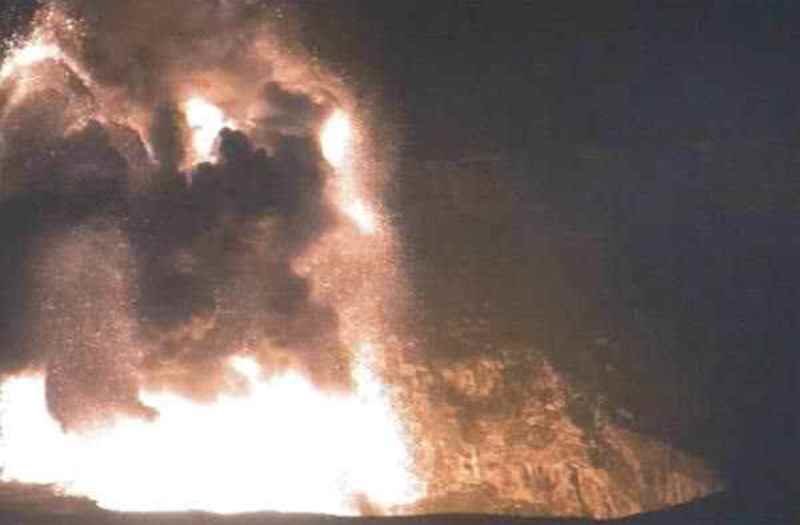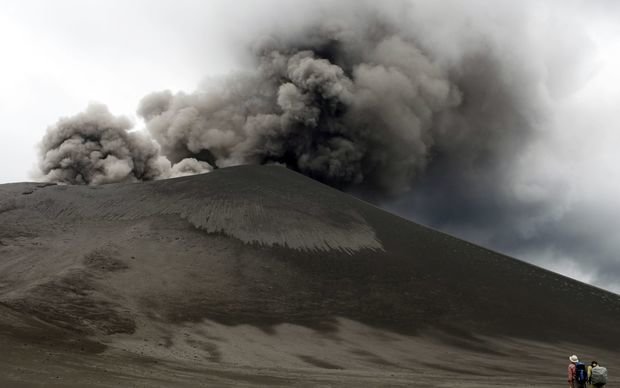
© USGS HAWAIIAN VOLCANO OBSERVATORY This webcam screen capture shows an explosive event that occurred after a rockfall Friday morning at the Overlook vent within Halema‘uma‘u Crater at the summit of Kilauea Volcano.
Since Saturday, there have been three such rockfalls resulting in small explosions at the summit lake, said Janet Babb, a geologist with the USGS Hawaiian Volcano Observatory.
"When the lava lake rises, it heats the rock in the vent's rim, and as you know, when you heat things, things expand and the rocks crack," Babb explained, "and because it becomes unstable, periodically we see these rockfalls."
She added,
"Over the past week, the level of the lava lake has been the highest it has been in the past six months."On Christmas Eve, the lake was about 210 feet below the floor; on Nov. 29, about 165 feet below; on Oct. 15, about 260 feet below; on Sept. 16, about 236 feet below; and on Aug. 20 about 190 feet below the crater floor. This week, the lava lake level has fluctuated from about 115 feet below on Sunday to 95 feet below on Wednesday. Thursday afternoon, the level was about 112 feet below the floor of Halemaumau.
The lava lake last overflowed the Overlook vent rim sending flows across the floor of Halemaumau Crater between late April and May 9, drawing thousands of visitors looking to get a glimpse of the activity. It marked the first time the floor of Halemaumau was exposed to lava since 1982.
Friday, Babb said, the lava still remained out of sight of visitors at Jaggar Museum. However, an incandescent glow is visible at night.
The most recent rockfall and explosive event occurred early Friday. At 3:51 a.m., a section of the Overlook vent's eastern wall fell into the summit lava lake resulting in a small explosion that agitated the lake enough to light up the night sky, she said. The explosion occurs when the rocks hit the lava lake's gas-rich foam-like surface.


Comment: Fuego volcano in Guatemala; increased activity, strombolian explosions, pyroclastic flow